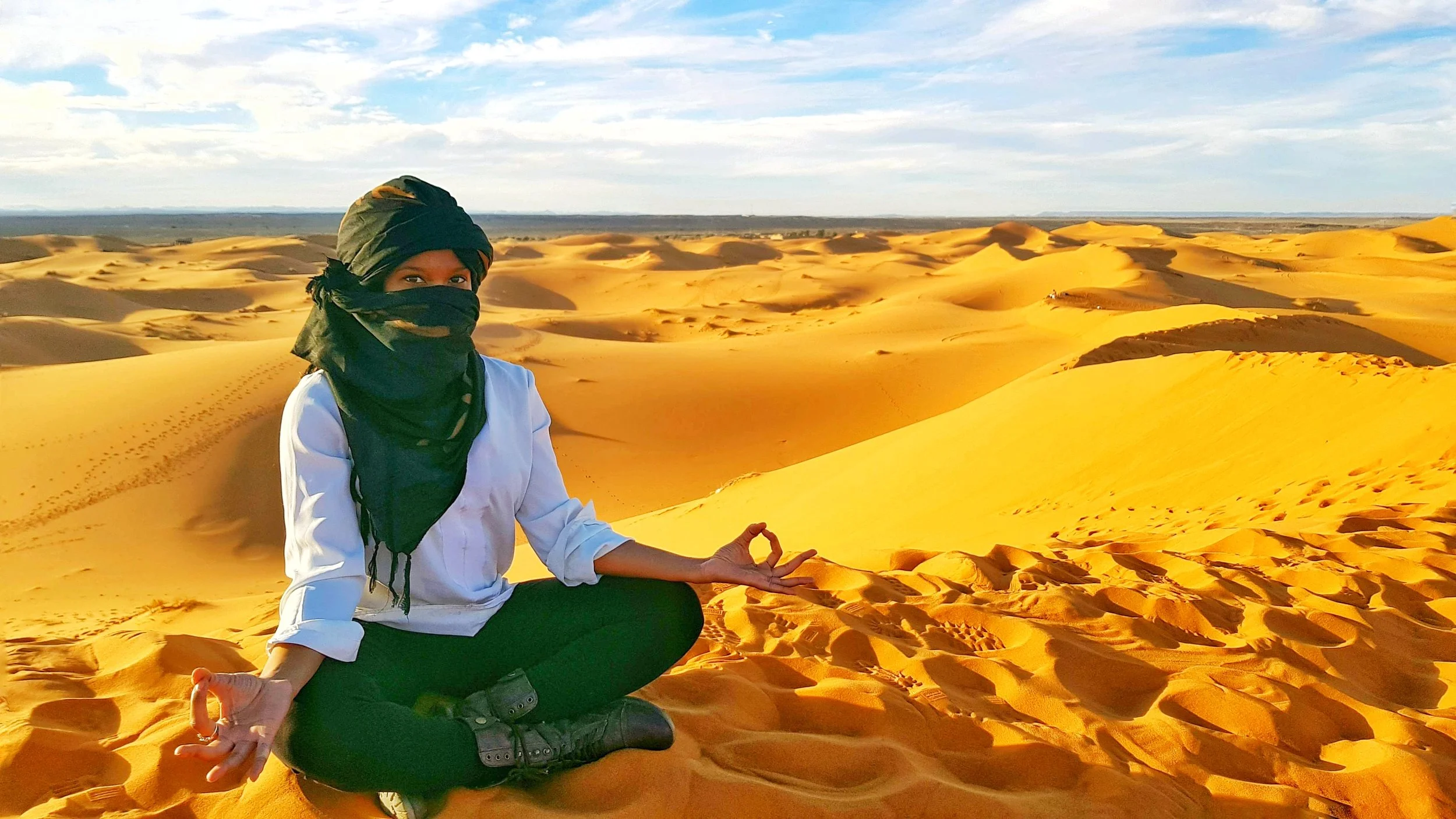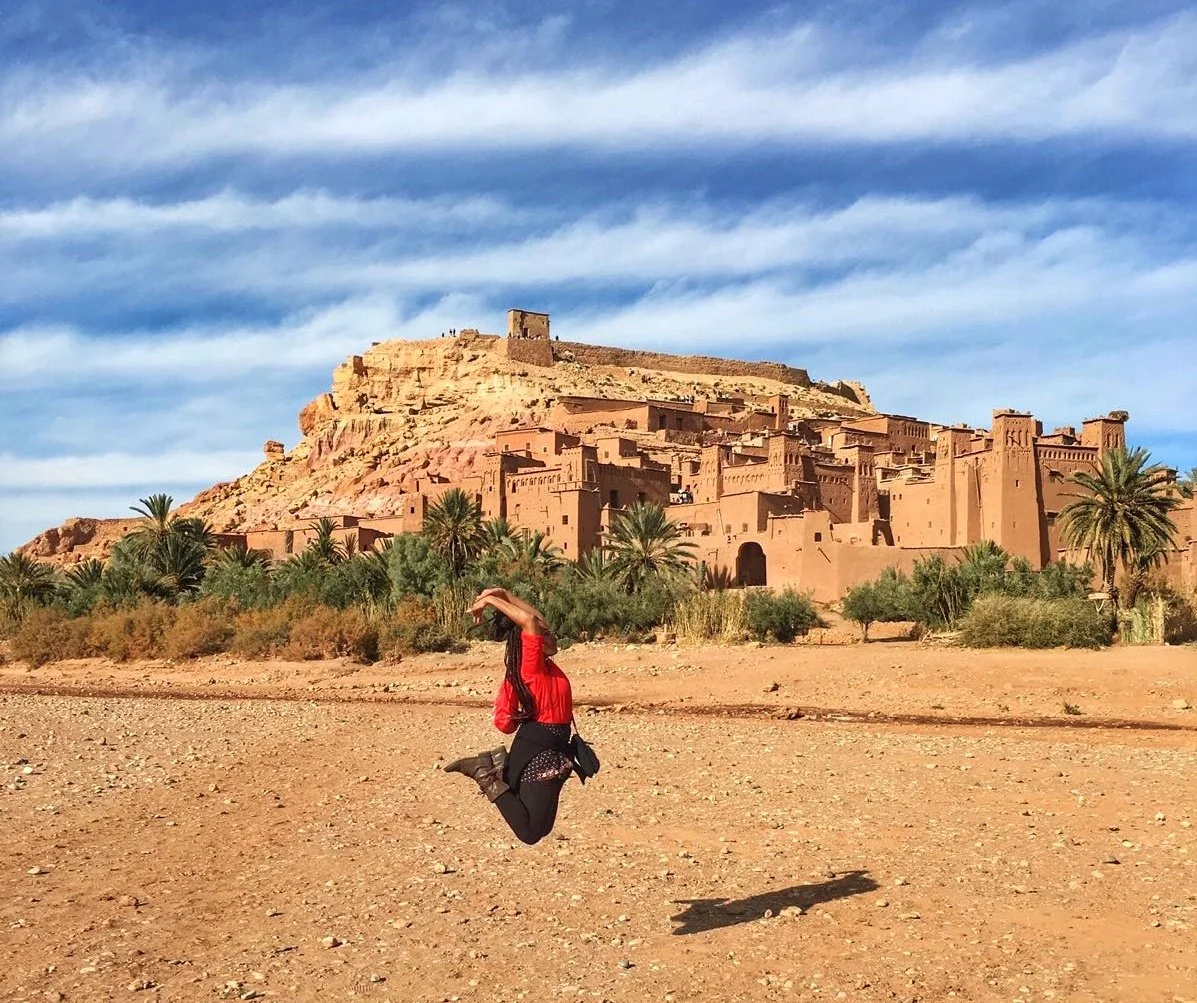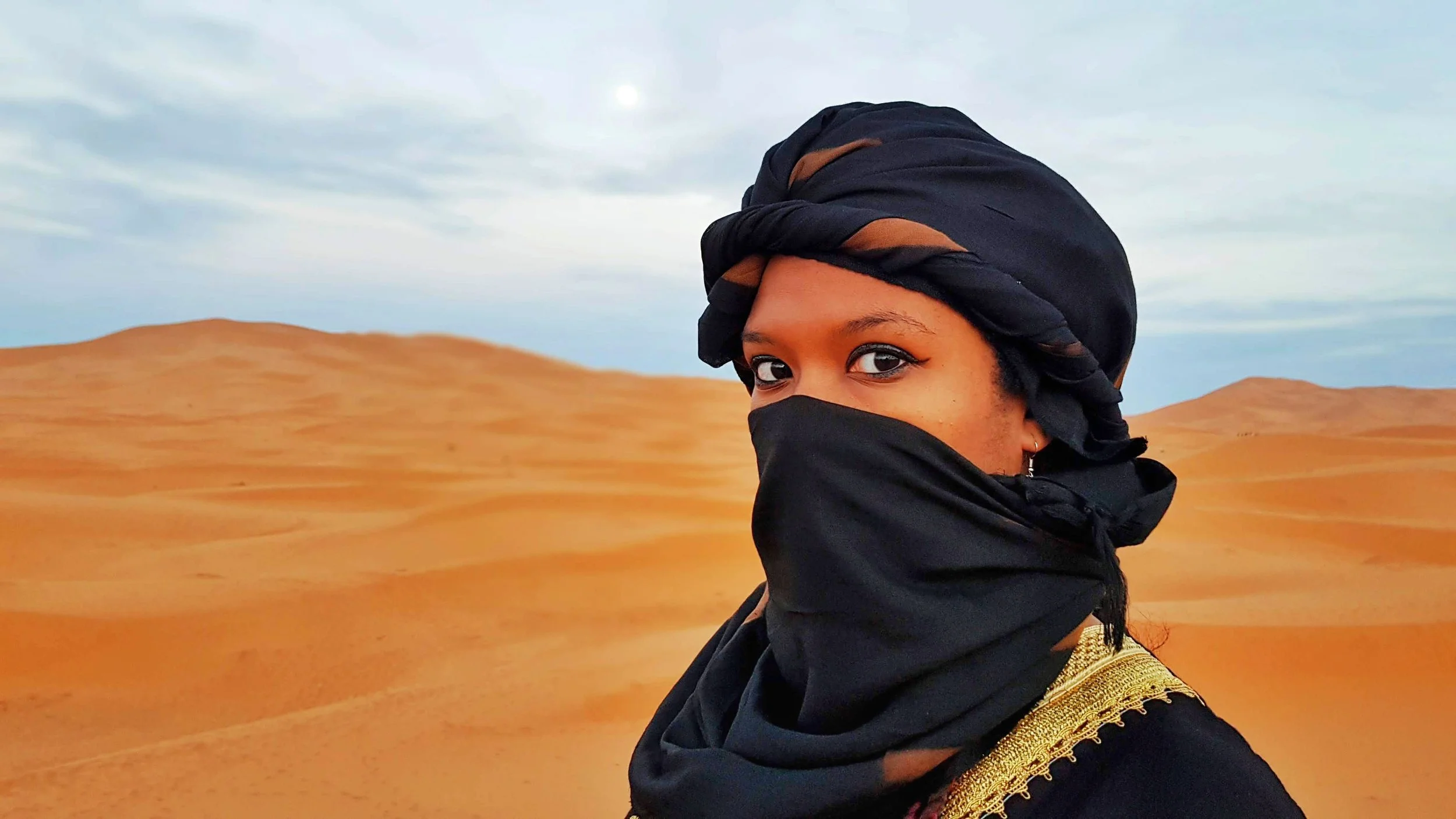Welcome to Morocco, the Kingdom of the West where Africa and Europe meet! Located to the northwest of Africa, the coastal country is full of many beautiful natural landmarks to explore, endless cultural monuments to discover, and lots of lively medinas to bargain-hunt. Moreover, thanks to Morocco’s predominantly Arabic and Berber population, it boasts a rich heritage bursting with delicious cuisine, delightful artisan crafts, and dazzling customs. The North African nation is also home to part of the world’s largest hot desert, the Sahara, a top destination for any adventurous traveler.
If you want to know the best places to see in Morocco, then this guide is just for you! From the breathtaking mosques of Rabat to the eye-popping beaches near Tangier, Morocco has plenty to offer travelers. So whether you prefer a relaxing beach holiday, a city escapade full of street food and shopping, or a quiet retreat in the captivating countryside, you’re bound to fall in love with Morocco.
Just don’t get lost in the lost wandering through the often maze-like medinas… You’ve been warned!
1. Tangier: A Quintessential Beach Destination
Situated along the Strait of Gibraltar in northwest Morocco, Tangier is the optimal destination for travelers seeking some fun and sun. Due to its strategic location, the seaside city was highly coveted for centuries, exchanging hands from the ancient Phoenicians nearly ten thousand years ago to the Moors in medieval times to the Spanish during World War II. With Morocco regaining complete sovereignty by 1956, Tangier still shines as a beacon of resilience and diversity, given its Muslim, Christian, and Jewish ties.
These days Tangier is popular for the copious cafes and clubs lining its beaches as well as its temperate year-round weather. While summers tend to be hot and sunny, winters are rather mild although wet, making the best time to visit between March and November. Spend a day enjoying its crystal waters at the pristine Tangier Beach, the pebbly Caves of Hercules Beach, or the isolated Sol Beach.
Still, beach days aren’t the only activity that Tangier provides since the mid-sized city is a cultural hub with many notable historic sites. Tour the majestic, 17th-century Grand Mosque, prepare to please your palette at any of the Central Market’s food stalls, or watch the sunset from atop the enchanting Kasbah fortress. Venturing through winding alleys of the medina (Old Town) to find the best souks (markets) is also a must-do, especially for bargain-hunters searching for souvenirs. After you’ve shopped until you’ve nearly dropped, take a breather in the April 9th Square, Tangier’s central plaza where the former sultan Mohammed V declared the nation’s desire for independence. You’ll be right in the heart of the action!
2. Rabat: A Captivating Capital
As one of Morocco’s four imperial cities and the current capital since it achieved independence in 1955, this city shouldn’t be missed by travelers looking to delve deeper into the country’s cultural roots. Rabat was first founded in the 12th century by the Moors, first as a fortified monastery, then as a naval base, with its name deriving from the Arabic for ‘‘Camp of Conquest.’’ Perched on a river delta along the Atlantic Ocean, the beachside city experiences warm, humid summers with mostly clear skies whereas winters are typically cool and a bit cloudy, leaving March to November as the best period to visit.
You can head to any of Rabat’s numerous beaches to beat the heat as it has several kilometers of sandy coastline that lead all the way down to Casablanca. For instance, Oudayas Beach is revered for its kayaking and windsurfing opportunities while Plage des Nations (Nations’ Beach) is a surfer’s haven for its constant waves. Many other beaches also offer visitors the chance to go horseback riding down the shore or jet-skiing on the Atlantic; activities that are sure to give sporty travelers a thrill!
The nation’s capital would briefly fall under French rule in the early 20th century and relics from its colonial past abound throughout, intermingling with ancient medieval monuments. Lovers of art and architecture will be delighted to visit prominent landmarks like the 12th-century Kasbah of the Udayas fortress, the impressive 12th-century Hassan Tower and the awe-inspiring Mausoleum of Mohammed V, the final resting place of the sultan who led the country to independence. Wander down Rue Souika to access the picturesque medina or stroll down Rue des Consuls in search of the best deals among its various shops, selling everything from clothing to houseware and decorations. Rabat also harbors many museums, such as the MMVI and the Oudaias Craft Museum, making it the most fitting location if you want a side of culture to go with your seaside holiday.
3. Marrakech: A Marvelous, Maze-like Metropolis
One of the most popular tourist destinations in Morocco, Marrakech shouldn’t be skipped if you don’t mind the endless hustle and bustle of crowds and the constant push of vendors selling their wares. Although Marrakech is far more chaotic than any other entry on this list, the former imperial city is certainly worth exploring for travelers craving an adventurous experience. Its inland location in central Morocco means that summers can be unbearably hot and the winters mild albeit rainy, with spring or autumn being the best times to visit.
The fourth biggest city in Morocco has been accommodating Berber tribes since the Neolithic Age some ten thousand years ago but it was officially founded by the Moors in the 11th century. High defensive walls made of crimson sandstone were added in the 12th century, earning Marrakech the nickname ‘‘the Red City,’’ and it would continue to thrive as a cultural, trading, and religious hub for centuries to come. So it should come as no surprise that the city houses the largest traditional market in Morocco and within its massive medina is Jemaa el-Fna, one of the busiest squares in the entire African continent. If your dream vacation includes bumping shoulder to shoulder with the locals and haggling over items such as jewels and lamps while being offered the most eclectic street food (monkey brain, anyone?), then Marrakech is the ideal place for you.
The walled medina was declared a UNESCO World Heritage Site in 1985 given its vast quantity of medieval masterpieces, including the stunning 12th-century Koutoubia Mosque and the nearby 12th-century Menara Gardens. Marrakech also has many palaces to discover, from the royal 15th-century Badi Palace to the elegant 19th-century Bahia Palace, along with a wide selection of heritage museums like the MACCAL or the House of Photography. Uncover the mysteries of sites such as the Kasbah Mosque and the Saadian's Tombs, which are some of the best highlights of the city. No matter what attracts you to Marrakech, you can rest assured you’ll have plenty to do.
4. Fez: A Shopper’s Paradise
This next entry is one of my favorite places in Morocco, particularly since it’s not as touristy as other major cities. For travelers who can’t handle the commotion and crowds of Marrakech, Fez is a great alternative, renowned for its artisanal crafts and authentic feel despite being the second-largest city in the nation. Its inland location to the north of Morocco lends it a more Mediterranean climate of very hot summers and short, mild winters that sometimes see snow.
Fez was first settled by the Moors between the 8th and 9th centuries and, by the 12th century, it would become a mecca for religious studies and commercial trade. Once the political capital of Morocco, nowadays the city is favored more for its grand architectural style along with other remnants from its colorful past. Fez also features two astounding medinas, Fes el-Bali and Fes Jdid, and Ville Nouvelle, the urban area built during the French colonial era in the early 20th century. These historic districts have many claims to fame such as the esteemed University of Al-Qarawiyy (established in 857) in Fes el-Bali and the regal Alaouite Royal Palace in Fes Jdid. With a myriad of ancient mosques, mausoleums, and markets making up much of the medinas, it’s no wonder why they were the first sites in Morocco to be awarded the status as a UNESCO World Heritage Site in 1981.
There’s no shortage of sights to see in the former imperial city, such as its majestic royal residences, sweeping gardens, vibrant tanneries, and funduqs where avid shoppers can find the best bargains on leather goods, woodworks, textiles, and other handicrafts. Some notable landmarks not to be overlooked include the Jnane Sbile Gardens, the Chouara Tannery, the Funduq al-Najjarin, and the promenade of Avenue Hassan II. After a heady day of exploration and/or shopping, weary travelers would do well to seek rest and relaxation at any of Fez’s well-preserved hammams (bathhouses), some of which date back to the 14th century. For instance, Hammam Mernissi is a luxury spa acclaimed for its amazing services, including cold, warm and hot rooms, and multilingual staff. Come to Fez to feast your eyes on its captivating crafts and stay for the laidback vibe. You won’t be disappointed!
5. Chefchaouen: An Idyllic Nature Retreat
Last, but certainly not least, is the Blue Pearl of Morocco, one of the most enchanting destinations in the country. Perched about 560 kilometers above sea level in the Rif Mountains, just about 40 kilometers from the Mediterranean Sea, Chefchaouen’s elevated, inland position means its summers are short, dry, and warm. However, its winters are longer, colder, cloudier, and thus much wetter, making May to October the most pragmatic time to visit.
Although not as large as other Moroccan cities, Chefchaouen is a must-see as one of the most unspoiled gems in the nation. The first settlement dates back to the 15th century when the first kasbah (fortress) was built to defend against the invading Portuguese and only grew as Moorish and Jewish emigrants fled there during the Reconquista of Spain, especially after the fall of the Nasrid Kingdom of Granada. This influx heavily influenced the city’s architectural style, which lends itself to many Andalucian elements in the form of curved arches and staired alleyways. Its famous azure hue wouldn’t predominate until the Second World War when many more Jewish refugees moved to the city and brought the tradition with them. The cerulean color was meant to represent the sky, thus bringing them closer to Heaven and God, and the practice would continue to proliferate across the city’s medina and beyond.
There are a vast variety of vivacious venues to visit such as the reddish 15th-century Kasbah Museum, a former fortress-turned-prison-turned-art-gallery surrounded by a lush garden, and the majestic 16th-century Grand Mosque. While the latter is only open to practitioners of the Islamic faith, you could also venture to the Spanish Mosque, the perfect place to watch the sunset if you don’t mind a bit of a hike up to its summit. Plaza Uta El-Hammam, the unofficial city center at the heart of the medina, should also be on your itinerary as the square is filled with copious cafes and restaurants serving authentic drinks and cuisine. Speaking of hammams (bathhouses), Chefchaouen houses several, from the local to the luxurious, and the activity is favorable for fighting away the chill on rainy days during colder seasons.
Still, the biggest draw to Chefchaouen is the opportunity to wander through its cobalt-hued streets and plunder its souks (markets) and bazaars. The city is a prevailing hub for local trade craftsmen who produce masterpieces through various mediums such as metalwork, needlework, woodwork, and leatherwork. Even if shopping isn’t your thing, it’s also very easy to get in touch with nature since the city’s immediate area is full of breathtaking national parks, cascading waterfalls, and scenic hiking trails; everything an adventurous spirit could ever want. If you’re looking for a relaxing holiday complete with natural beauty, Chefchaouen should be your top pick.
Honorable Mentions
Whilst the cities on this list are just my top recommendations, there are many more places that I just felt should be pointed out. Morocco has such a rich abundance of provinces that each entry is unique enough to be briefly mentioned so these are the places that I think at least deserve a shout-out:
Meknes
One of Morocco’s four imperial cities and the sixth biggest in the country, Meknes shouldn’t be passed up by travelers looking for an authentic experience in Morocco far from crowds of other tourists. Founded in the 11th century, the former Moroccan capital is absolutely gorgeous, with several well-preserved landmarks throughout its historic medina. The area is also the site of two ancient ruins, Moulay Idriss and Volubilis, both of which are equally untouched and worth exploring.
Dades Gorge
Located in central Morocco, the area is essentially a series of profound gorges carved out by the Dades River through the Attas Mountains millions of years before. The vast region boasts bluffs as high as 500 meters tall in some parts and, although mostly arid, the river allowed life to flourish as Berbers settled among the rock formations. Over the centuries, they established copious kasbahs that remain to this day, many of which have been turned into boutique hotels for tourists. Follow the hairpin turns along the paved Road of a Thousand Kasbahs to pick your favorite. While in the area, not also visit Ait Benhaddou, one of Hollywood’s favorite movie sets, just a 2.5-hour drive away?
Casablanca
For travelers searching for bars, clubs, and nightlife, the White City is just the place. The largest city in Morocco and its economic center, Casablanca is known for being much more modern than its other counterparts while still offering visitors the chance to bathe in the Atlantic Ocean. The sprawling seaside municipality is popular for its various year-round festivals as well as its iconic monuments like the gargantuan Hassan II Mosque, the second-largest in Africa, and Morocco Hall, the biggest commercial center on the continent. Visit Casablanca for its culture and stay for the couture.
Sahara Desert
It would be a huge disservice not to add the world’s biggest hot desert to this list since it covers a territory about the size of the entire United States. Part of the Sahar runs north-to-south along the eastern border of Morocco, which it shares with Algeria. While summer is typically the best season to travel to most destinations, the ideal time to head into the Sahara is between October to May when temperatures aren’t as extreme during the daylight hours. You can venture into the expansive dunes on your own by starting in the nearby town of Merzouga but hiring a tour guide is highly recommended so as not to get permanently lost among the sand. You’ve been warned!
Final Thoughts
Morocco is a mesmerizing destination, full of mysteries, myths, and medinas that are sure to mystify you. Its terrain spans about 500 thousand square kilometers (over 700 thousand square kilometers with the Sahara Desert), making it the 57th largest country on the globe with only a population of around 37 million inhabitants. Thanks to the nation’s proximity to the Atlantic Ocean and the Mediterranean Sea, its extensive history features influences from across Africa, Europe, and the Middle East.
Most cities are well-connected and readily accessible by public transportation. For example, Tangier is easily reachable via a short ferry ride from Tarifa in southern Spain whereas Rabat has an international airport and many national railway lines operated by the ONCF. From there, Casablanca, Fez, Chefchaouen, and any other destination are just a short flight or bus ride away.
Lastly, Morocco has literally too many stunning sites to consider and this article couldn’t possibly begin to do them all justice. Try to discover the country at your own pace and see which locales enchant you the most.
Stay in Tangier for a serene, seaside escapade along the Strait of Gibraltar or in Marrakech if you prefer to always be at the center of the action in its medina. For art connoisseurs, Rabat is brimming with historical and cultural galleries and museums and also sports a splendid shoreline for a relaxing dip in the Atlantic. Fez is a resplendent haven for lovers of antiques, housewares, and fashion accessories, while Chefchouen is a superb mountain hideaway for avid hikers or travelers craving to get away from it all, particularly with the towering God’s Bridge not too far away. If you get the chance, I also highly suggest sandboarding down the dunes of the Sahara Desert, an incredible experience that you’re likely never to forget. Write me when you get there!
May you get lost in the wonder,
M













